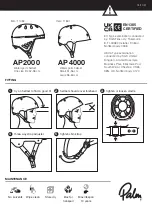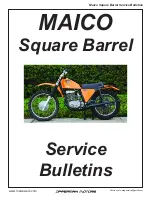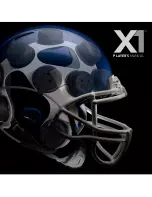
15
Colorado Motorcycle Operator’s Handbook
a passing speed until he has opened up room for the next
ULGHU:KHQWKHÀUVWULGHUKDVSDVVHGVDIHO\WKHVHFRQG
rider should move up the left position and watch for a
safe chance to pass. After passing, this rider should return
to the right position and open up room for the next rider.
NOTE:
Some people suggest that the leader should move
to the right side after passing a vehicle. This is not a good
idea. It encourages the second rider to pass and cut back
in before a large enough cushion of space has been opened
up in front of the passed vehicle. It’s simpler and safer if
each rider waits until there is enough room ahead of the
passed vehicle to allow the rider to move into the same
position held before the pass.
15. YOUR MOTORCYCLE
There are plenty of things on the highway that can cause
you trouble. Your motorcycle should not be one of them.
To make sure your motorcycle won’t let you down,
start with the right equipment, keep it in a safe riding
FRQGLWLRQDQGDYRLGDGGRQVRUPRGLÀFDWLRQVWKDWPDNH
your cycle harder to handle.
15.1 THE RIGHT EQUIPMENT
:
First, make sure your
PRWRUF\FOHLVULJKWIRU\RX,WVKRXOG´ÀWµ\RX<RXUIHHW
should be able to reach the ground while you are seated
on the cycle.
Accidents are fairly common among beginning riders,
HVSHFLDOO\LQWKHLUÀUVWVL[PRQWKVRIULGLQJ'RQ·WWU\D
“big bike” until you have a lot of riding experience. No
matter how experienced you may be, ride extra carefully
on any bike that’s new or unfamiliar to you. More than
half of all accidents occur on cycles their riders have used
for less than six months.
15.2 MOTORCYCLE CARE
: A motorcycle needs
more frequent attention than a car. A minor mechanical
failure in a car seldom leads to anything more than an
inconvenience for the driver. When something goes wrong
with a motorcycle, it may cause an accident.
The only way to head off problems before they cause
trouble is to inspect your motorcycle carefully and often.
,I \RX ÀQG VRPHWKLQJ ZURQJ À[ LW ULJKW DZD\ 5HIHU WR
your owner’s manual for proper care and maintenance.
16.
MOTORCYCLE OPERATOR SKILLS TEST
The Motorcycle Safety Foundation (MSF) is a state
approved Skill Test for both two and three wheel vehicles.
The test consists of exercises that evaluate your ability to
perform basic vehicle control, riding judgment, and hazard
response skills.
Prior to being tested, you must show valid proof of
insurance and valid registration for the motorcycle you
will be using on the test. A safety check of your motorcycle
will include; headlights, taillights, brake lights, turn
signals, mirrors, and tire tread depth. The engine size of
the motorcycle must be rated at over 50 C.C.
The test consists of six riding exercises that measure your
vehicle control and hazard response skills. You will be
scored on time and distance standards as well as path
violations and foot down violations. The test may be ended
for point accumulation, committing an unsafe act, stalling
the vehicle four times, or failure to understand or follow
instructions. You may stop the test at any time, but you
must complete the entire test to pass it.
You will be tested on the following exercises:
2-Wheel Motorcycle
&RQH:HDYH7KHUHDUHÀYHFRQHVVSDFHGIHHWDSDUW
in a straight line. Do not skip or touch any cones or put
your foot down.
1RUPDO6WRS0DNHDVPRRWKQRQVNLGGLQJVWRS
7XUQIURPD6WRS0DNHDULJKWWXUQEHWZHHQWKHERXQG
-
ary lines. Do not touch either line or put a foot down.
/HIW87XUQ'RQRWSXW\RXUIRRWGRZQRUWRXFKWKH
solid line or dashed line (depending on the size of your
motorcycle).
4XLFN6WRS)URPDSSUR[LPDWHO\WR03+VWRS
the motorcycle safely but as quickly as you can. You
are not marked down if you skid, but will loose points
if you lose control.
2EVWDFOH6ZHUYH)URPDSSUR[LPDWHO\WR03+
swerve the motorcycle safely to the right or left of the
obstacle line, staying inside the indicated boundaries.
Do not touch the obstacle line or the boundaries.
3-Wheel Motorcycle
/HIW7XUQ0DUNDVKDUSOHIWWXUQEHWZHHQWKHRXWVLGH
boundary line and the cone marker. Do not touch the
outside line or the cone.
1RUPDO6WRS0DNHDVPRRWKQRQVNLGGLQJVWRSZLWK
your front tire inside the box (left front tire on vehicles
with two front tires).






































